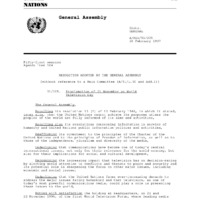Contents
Radio Vs. Television
Transitions
From its birth in the early 20th century, broadcast radio ruled "the airwaves" bringing not only entertainment into listeners' homes, but also providing news and information about events from around the world with an immediacy like never before. While radio was an intensely popular and widely available form of mass media from about 1920 to 1945, television quickly surpassed the radio in significance and novelty as the "radio with pictures" became an item of astonishment and cultural significance (Encyclopedia Britannica).
An emblematic example of this cultural shift may be seen in the technology used by Presidents to deliver the State of the Union address in the 20th century. President Calvin Coolidge made history in 1923 by delivering the State of the Union address via radio broadcast, only to be outdone 24 years later by President Harry Truman who delivered the State of the Union address via televisison broadcast for the first time (White House).
Controversy and Criticism
While viewers far and wide ultimately embraced the television, the advent of the new medium prompted criticism and concern in its early decades. The Senate convened a subcommittee to investigate juvenile delinquency, wary of the effects television might have on the youth of America, and published a report with their findings in 1956.
Forty years later, the German delegation at the 1996 meeting of the United Nations General Assembly voiced criticism concerning the inaccessibility of television while debating whether to ratify the resolution proclaiming November 21 as World Television Day. The delegation asserted that the "vast majority could easily look at World Television Day as a rich man’s day. They do not have access to television. There are more important information media and here I would mention radio in particular. We think it is more important to enhance the role of those media than that of television. (88th plenary meeting record, p. 24)"

